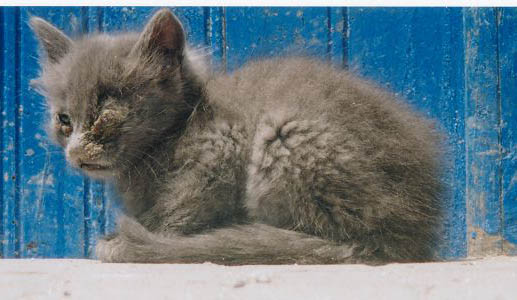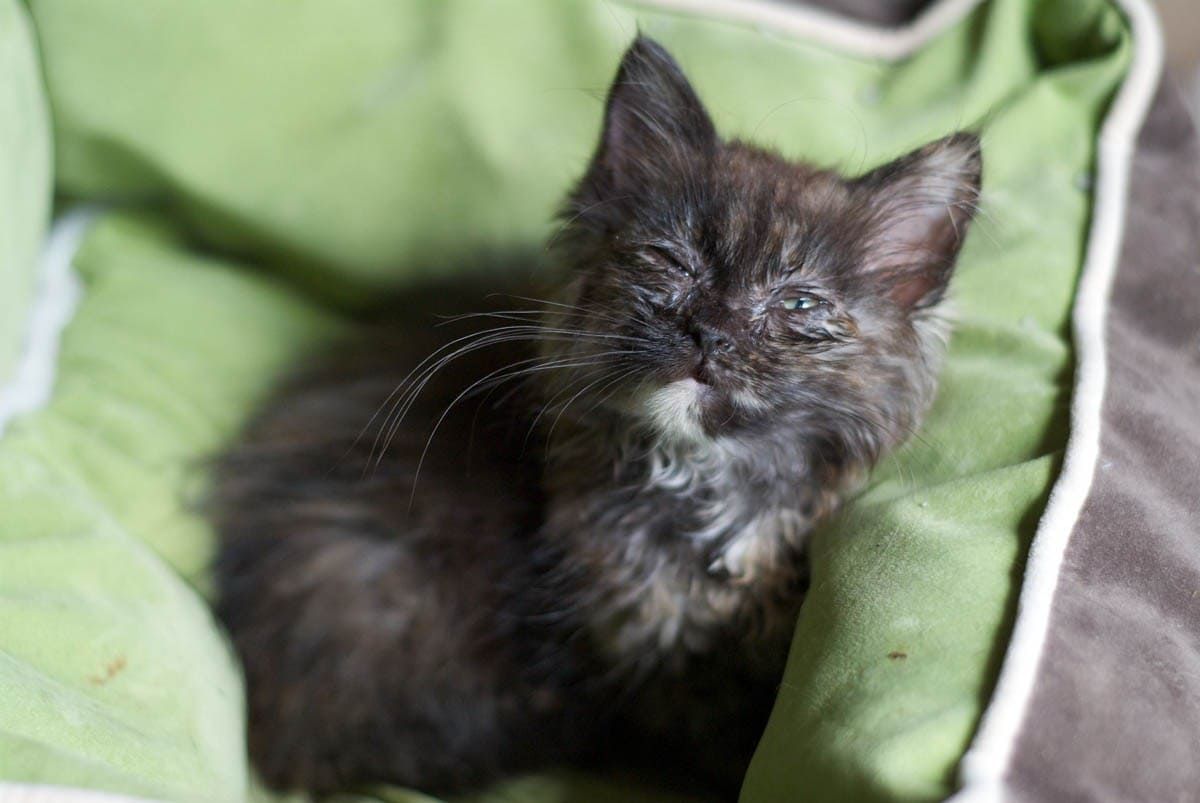About
Eye infections occur when pathogenic (disease-causing) organisms invade any part of the eyeball or surrounding tissue. They can affect one eye (unilateral) or both (bilateral).
Any changes to the eye such as discharge, squinting, blinking, redness or watering must be checked with a veterinarian as soon as possible, untreated eye infections can lead to permanent ocular damage and loss of vision.
Causes
Eye infections can be caused by bacteria, viruses or fungi. The type of infection relates to the part of the eye infected as well as the pathogen. Different parts of the eyeball and surrounding tissue can become infected or inflamed.
Types of eye infection:
- Conjunctivitis – Inflammation or infection of the conjunctiva, the pink membrane which covers the front of the eyeball and inside the eyelids).
- Uveitis – Inflammation or infection of the uvea (the pigmented vascular layer of the eye consisting of the iris, choroid, and ciliary body).
- Blepharitis -Inflammation or infection of the eyelid.
- Stye – Infection of the sebaceous gland in the eyelid.
- Keratitis – Inflammation or infection of the cornea.
Infections may be on their own or occur due to systemic illness such as feline herpesvirus or calicivirus (both causes of cat flu).
- Conjunctivitis is the most common eye infection in cats, and the most common cause of conjunctivitis is chlamydia, caused by the intracellular, gram-negative bacterium Chlamydophila felis).
- Injuries to the cornea resulting in scratches or ulcers can lead to an eye infection. Foreign objects such as grass seeds or an eyelash constantly rubbing on the surface can damage the surface which makes it more vulnerable to eye infections.
- Viral infections, most commonly feline herpesvirus and calicivirus can be the primary cause of eye infections, damage occurs, secondary bacterial infection can take hold.
- Cats with weakened immune systems such as those with feline immunodeficiency virus are more prone to eye infections due to their compromised immune systems.
- Newborn kittens can develop eye infections early on, due to a vaginal infection at the time of the delivery or unclean surroundings. Kittens have very underdeveloped immune systems and are much more prone to developing infections than older cats. If you do have a litter of kittens, keep their surroundings clean and watch out for signs of infection.
Some cats will carry a viral infection (such as herpesvirus) for the rest of their life and at times of stress, the virus will reactivate and cause symptoms.
Healthy cat eyes

- A tiny bit of sleep in the corner of the eye is nothing to worry about, but it should not be excessive (see below).
- The eye should be clear, with no signs of swelling in or surrounding the eye.
- Pupils should be equal in size.
- No signs of cloudiness, swelling or redness.
Symptoms

Image Kelbv, Flickr
Discharge and/or swelling are the most common symptoms of eye infections. The type of eye discharge can give your veterinarian an indication as to the type of infection your cat has. If the discharge is thick and mucousy, it is indicative of a bacterial infection. Clear discharge is more likely to be viral in nature.
Other symptoms may also be present depending on the cause.
- Redness and swelling may occur around the outer eyelid, the third eyelid or the conjunctiva
- Squinting
- Excessive blinking
- Raw, meaty appearance around the eye (this is a common sign of conjunctivitis)
- Rubbing the eye
- Discharge this may be thick, thin or watery
- Pain
- Excessive tearing
- Crusting over the eyelid, which may, in turn, cause the upper and lower eyelids to become glued shut
- Photosensitivity (aversion to bright light)
- Change in appearance of the eye (cloudy colour)
Diagnosis
Eye infections are serious and require urgent medical treatment. Left untreated eye infections can cause permanent blindness. Some eye infections, (such as conjunctivitis) are extremely contagious to other cats.
Your veterinarian will perform a thorough ophthalmic examination and make a diagnosis based on symptoms. Is one eye or both eyes affected? Is there discharge, if so, what is it like, is there any pain, redness, what about accompanying symptoms?
Diagnostic tests:
Baseline tests – Biochemical profile, complete blood count and urinalysis to evaluate the overall health of your cat.
Culture and sensitivity – If there is discharge from the eye, your veterinarian will perform a culture and sensitivity. A sample of discharge is obtained and sent to a laboratory where it is placed on a medium (agar) to promote the growth of bacteria or fungi. Once the bacteria or fungi have been cultured, discs made from filter paper that have been impregnated with antimicrobial drugs are placed on the bacterial or fungal lawn to determine the most suitable drug.
Fluorescein eye stain – Eye drops are placed in the eye to detect foreign bodies or corneal ulcers.
FIV and/or FeLV blood tests – If the cat suffers from recurrent eye infections as these viral infections cause immunosuppression, which makes the cat vulnerable to opportunistic infections.
Treatment
If you suspect your cat has an eye infection, seek medical attention. Never use medications for humans on cats, and that includes eye drops.
Treatment will depend on the cause and/or the location of the infection.
- Antibiotic ointment or drops for bacterial eye infections.
- Anti-fungal medications.
- Most viral eye infections are self-limiting and will go away on their own, however, your veterinarian may choose to prescribe topical anti-viral cream or drops if the cause is viral.
- Wipe away any discharge with a damp cotton wool ball. Discard immediately.
- A warm compress to relieve discomfort.
- Your cat may have to wear an Elizabethan collar during treatment to avoid rubbing/damaging the eye.
- Always wash your own hands after treating a cat’s eyes, it is possible for some infections to be transmitted to humans.
- Keep bedding and food bowls clean at all times.
In some cases, supportive care will be necessary for cats with upper respiratory infections. This includes intravenous fluids to treat dehydration, nutritional support and oral antibiotics for a secondary bacterial infection.
Safety
Make sure you never touch the tip of the bottle to the cat’s eye or your fingers to prevent transferring bacteria to the bottle.
Store all medicines as prescribed.
If you have other cats in the household, watch out for signs of eye infection in them.
Key points
- Eye infections always require veterinary attention, untreated infections can cause blindness.
- Any part of the eye can become infected by bacteria, viruses and fungi.
- Common causes of eye infections in cats are upper respiratory infections (cat flu), chlamydia and trauma.
- Symptoms of eye infections in cats include squinting, redness, discharge and pain.
- Treatment will depend on the cause but can include antibiotics, eye drops, and ointments to protect the eye.
- Eye infections don’t go away on their own.

